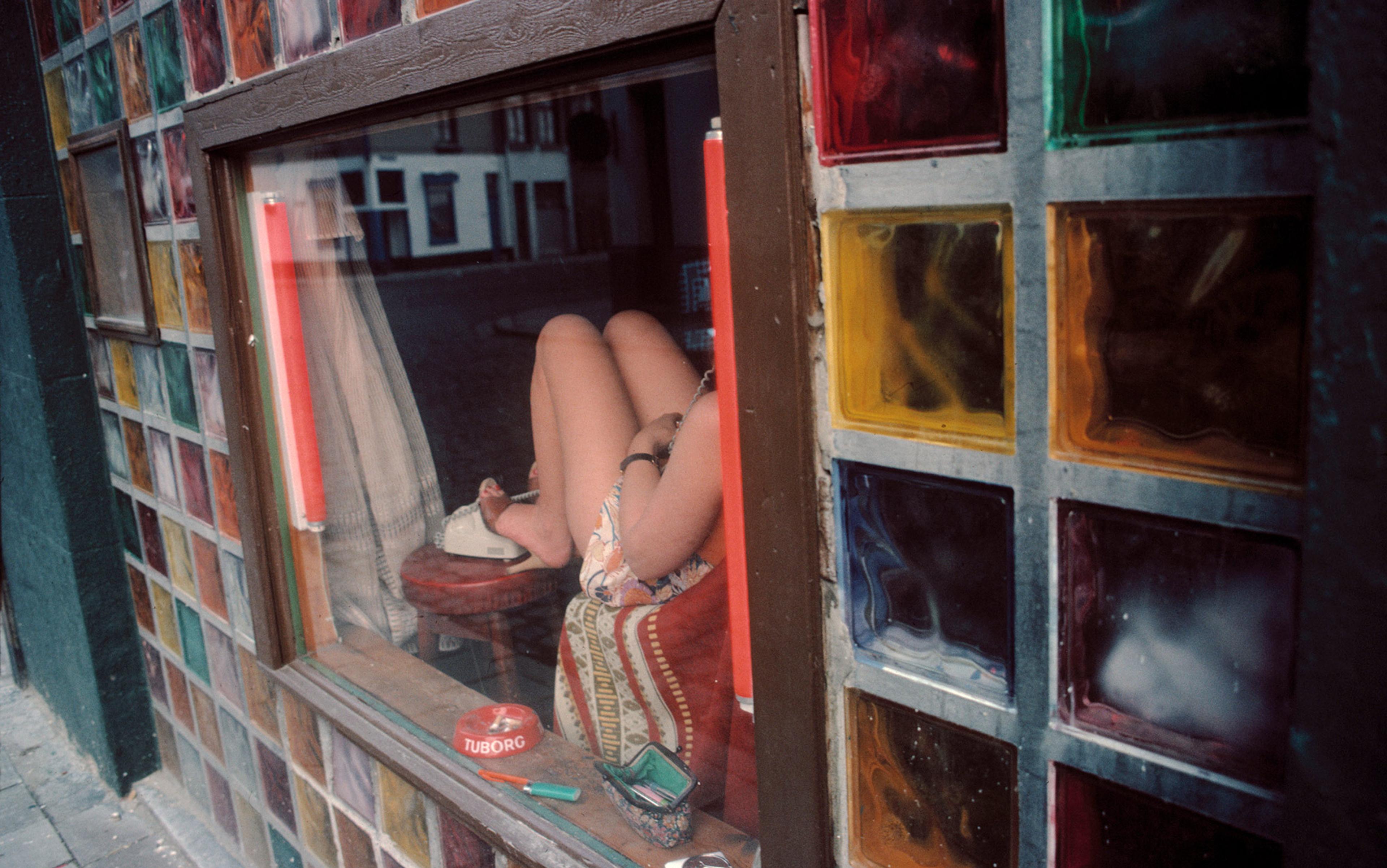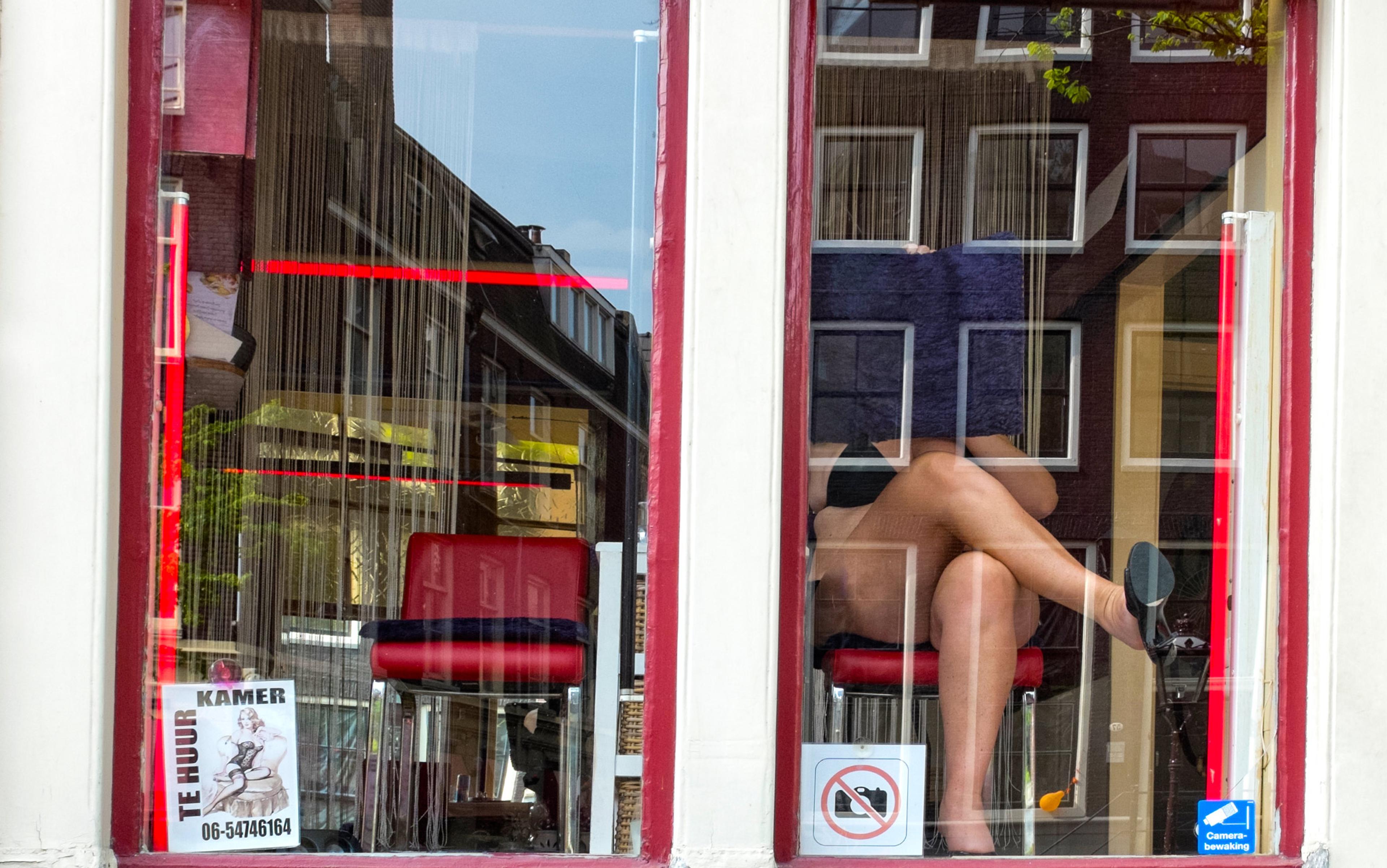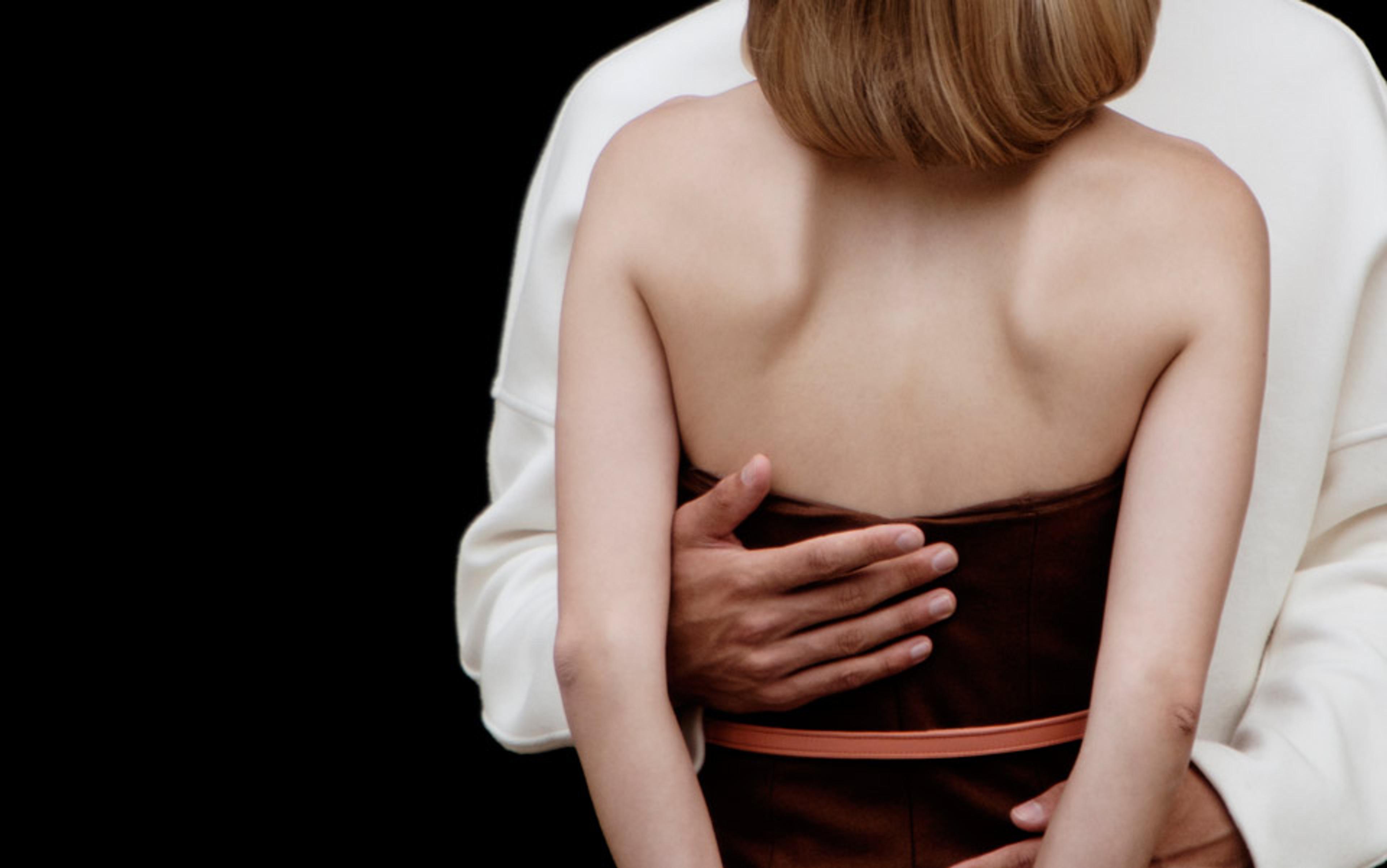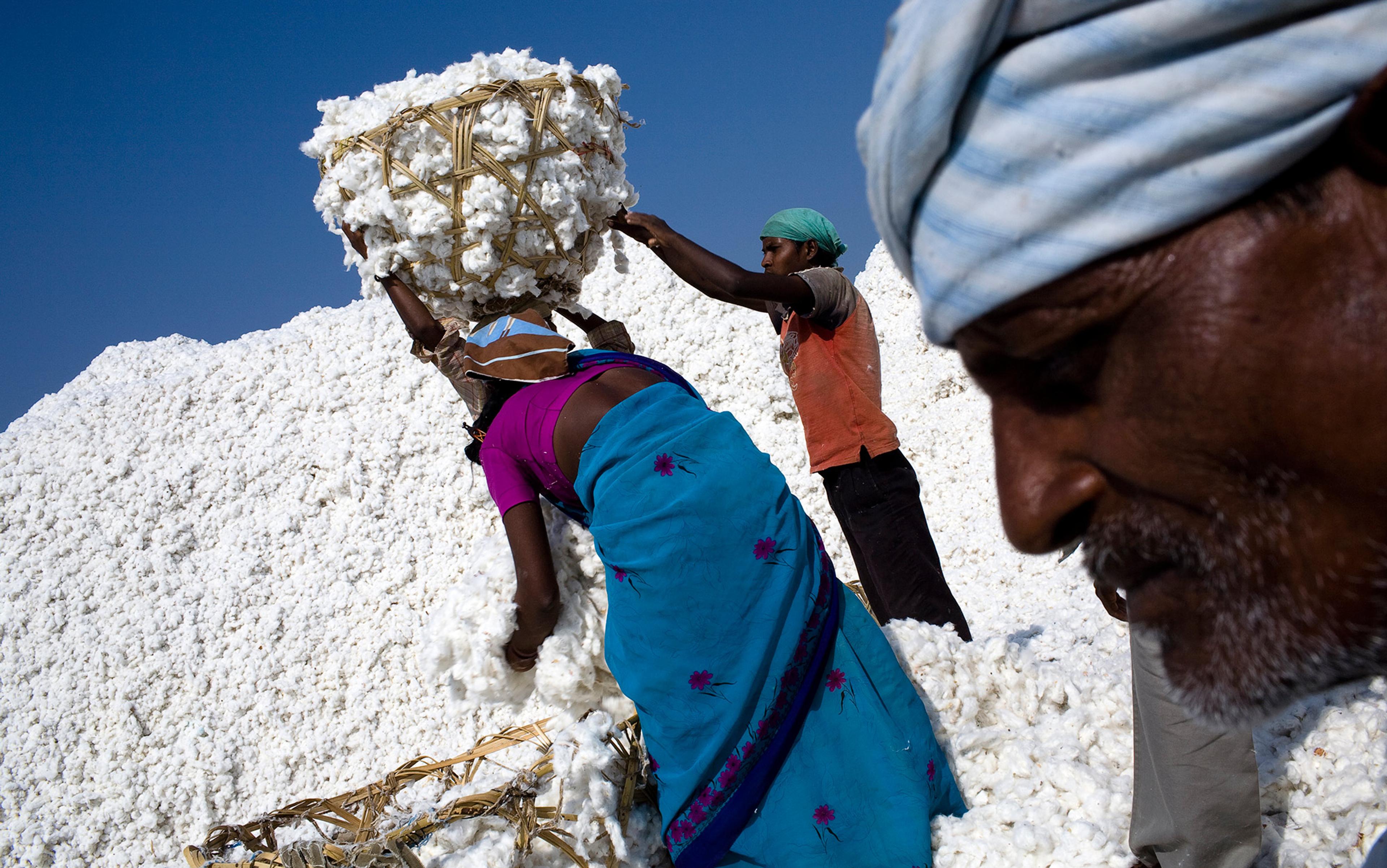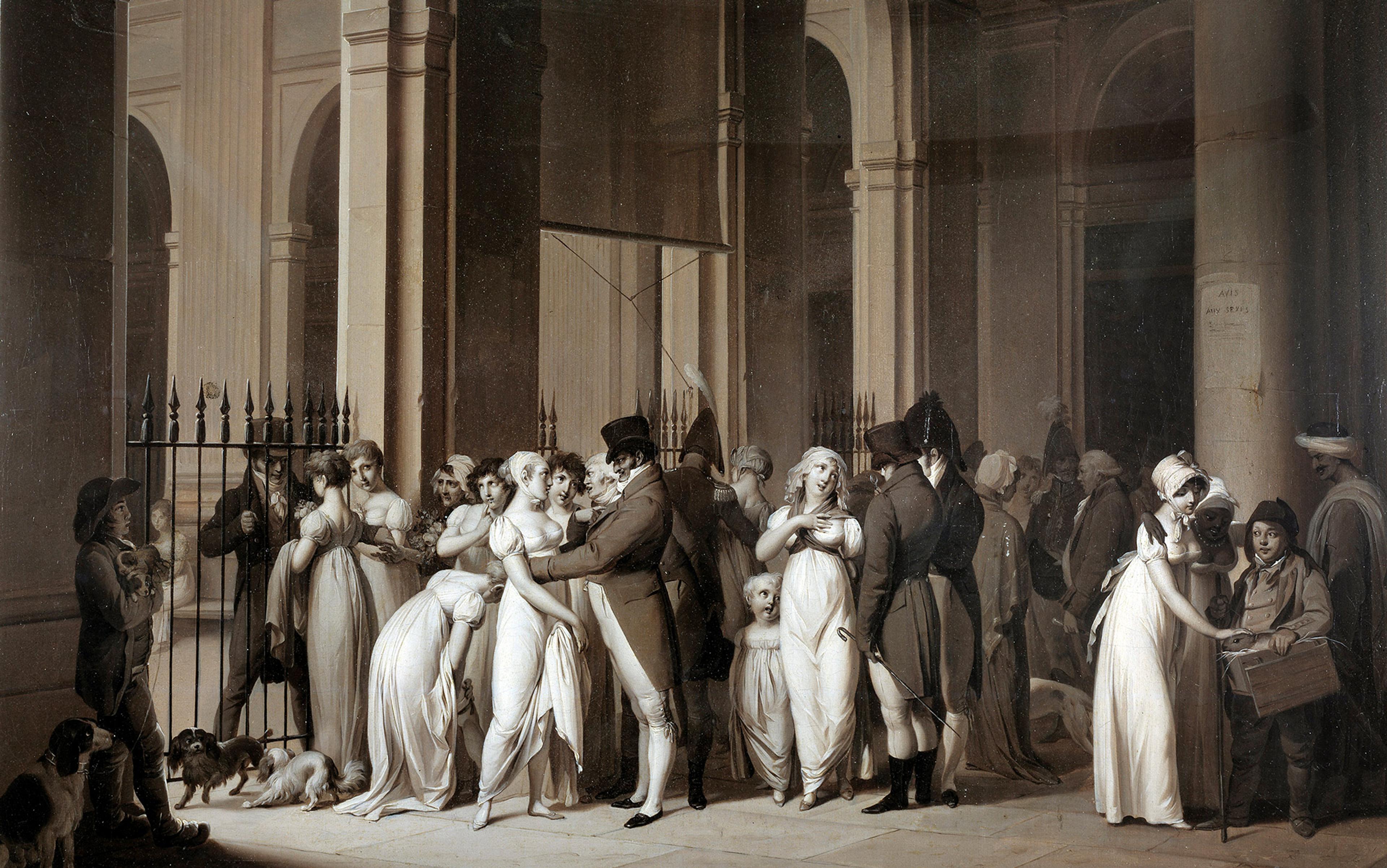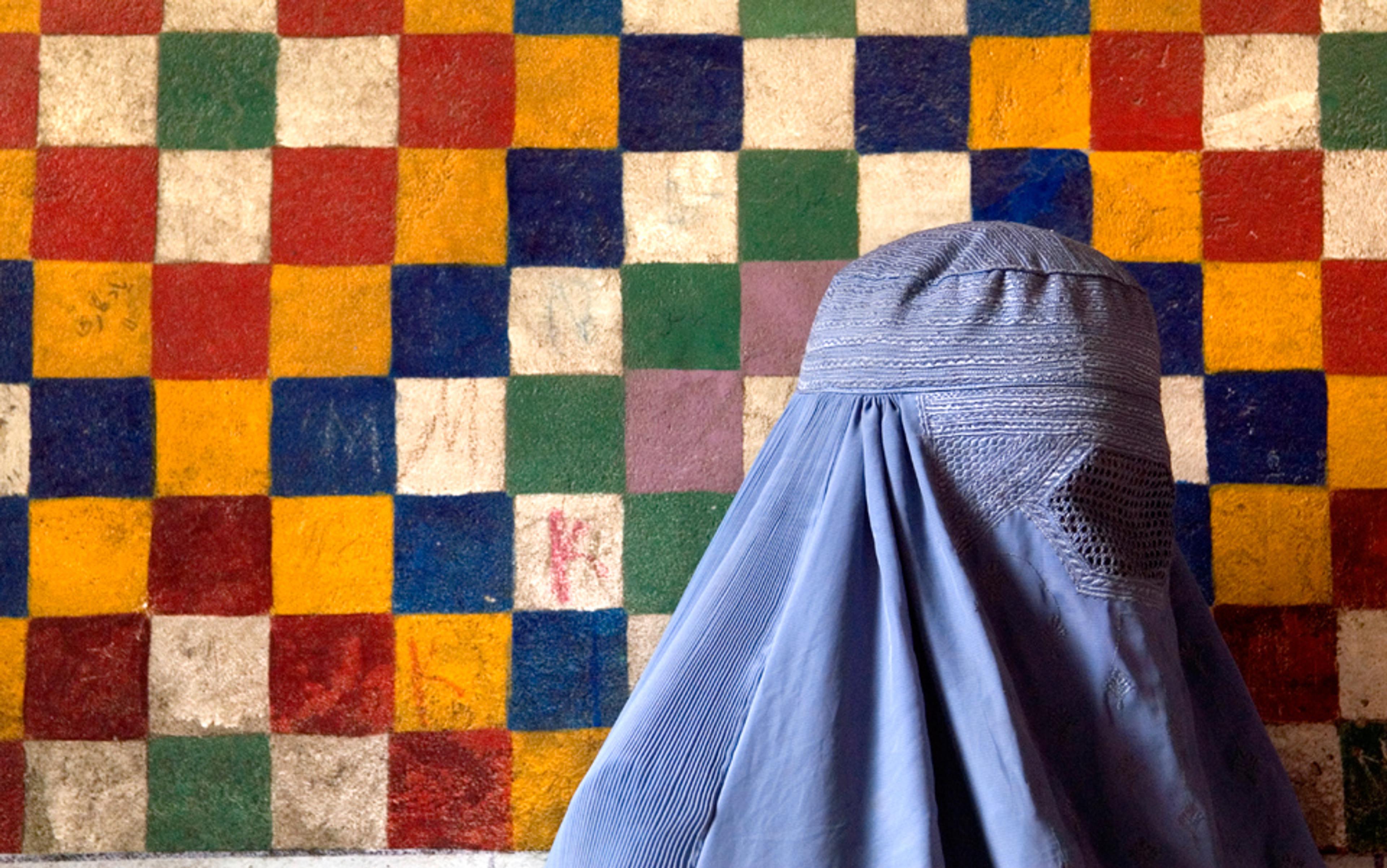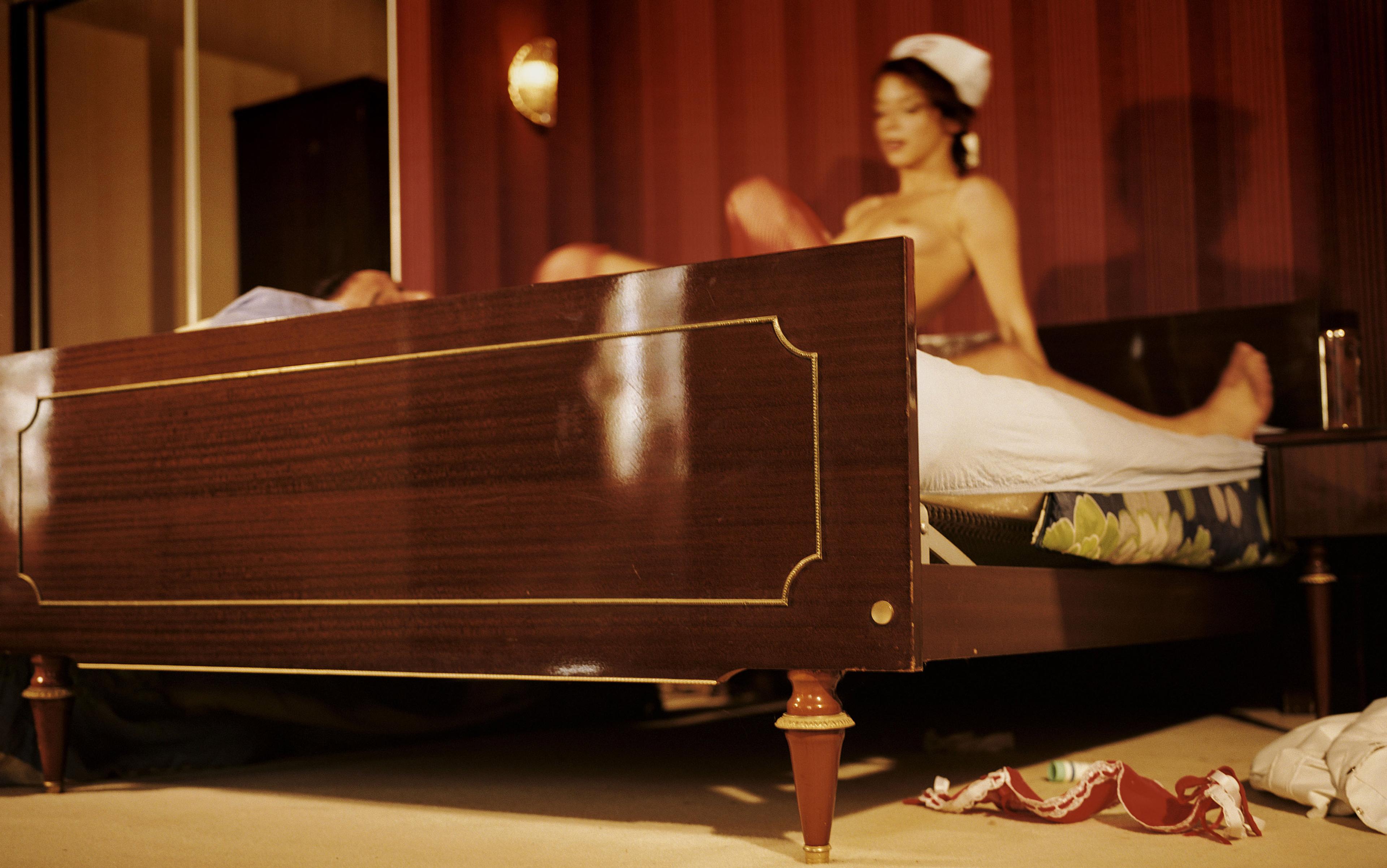Prostitution is a system of commercial sexual exploitation, which is reliant on and steeped in racism, colonialism, slavery, genocide and abuse of the most marginalised and disenfranchised women and girls. The sex trade has much in common with the slave trade.
Transatlantic slavery was a centuries-long international trade in people and their labour, spanning from the early 1500s to the 1880s. Since the end of transatlantic slavery in 1888, nation-states and international institutions have legally recognised and been committed to protecting the fundamental rights of human beings. In light of these promised protections, resurgence in the enslavement of human beings would seem impossible.
Sexual abuse, harassment and prostitution, as well as enforced pregnancy, were commonplace for women living under slavery. Soldiers on slave ships, as well as slavers and other men working in the slave trade, would routinely abuse enslaved women and girls. Then, as today, sexual violence was used as a weapon of terror – to dehumanise the women and to humiliate their husbands, brothers and sons who were reminded of how impossible it was to prevent such debasement. In North America, there was a ‘fancy girl’ trade, in which young and usually light-skinned black women were sold into prostitution, at rates four to five times the price of women field labourers.
Reminiscent of the tactics used by contemporary pimps and brothel-owners to sanitise the sex trade, for example referring to commercial transactions between older men and teenaged women as ‘sugar daddies’ and ‘sugar babes’, it is well-documented that slavers’ similarly attempted to sanitise the slave trade by repackaging it as simply ‘labour’. For example, in a letter dated 1 April 1789, a pro-slavery strategist in the West Indies suggested: ‘Instead of “slaves”, let the Negroes be called “assistant-planters”; and we shall not then hear such violent outcries against the slave trade by pious divines, tender-hearted poetesses, and short-sighted politicians.’
The goal of the slave trade was to make as much money as possible. And the goal of pimps, traffickers and brothel-owners today is exactly the same. In both cases, the merchandise on sale is the human body. Prostituted women rarely use their given names, often adopting a new name suggested by their pimp or brothel-owner. These women are considered to be so lowly that they are only worthy of selling for sex. Some of the women are branded with tattoos by their ‘owners’ to stop them escaping or being controlled by another pimp. And life expectancy for women in the sex trade is lower than average, while murder rates are far higher.
I have been researching and campaigning against the global sex trade for more than 20 years. During this time, I have travelled and spent time with hundreds of women (and some men) who have shared their stories of abuse and exploitation. In arguing here that prostitution is slavery, I am relying on the reality of these women’s lives, rather than presenting a statistical case study.
The pimps, brothel-owners and sex-buyers I have encountered during my journey have told me various stories, usually without shame, of how they dehumanise and ‘own’ the women in prostitution in order to rationalise using them as merchandise. Links between slavery and the pornography trade are also clear. Take porn videos such as Black Wives Matter and 12 Inches a Slave. Like the slave trade, the sex trade operates as a huge commercial business.
The existence of the sex trade is reliant on misogyny, class prejudice, racism, colonialism and imperialism. There is much written about the gendered nature of the sex trade, as well as how poverty is a key driver. Meanwhile, there has been a resounding silence regarding racism in prostitution, yet many of the 50 sex-trade survivors with whom I spent time while researching my book on the global sex trade, The Pimping of Prostitution (2017), spoke of the dual oppressions they faced as women from minority ethnic communities. I will share some of their experiences here.
I have heard many black sex-trade survivors link their prostitution experience to that of slavery. Vednita Carter, an African-American sex-trade abolitionist, told me:
The slave-trade era is where sex trafficking began for African-American women. Even after slaves were free, black women and girls were still being bought and sold. Today there are too many poor urban areas that middle-class men drive through for the sole purpose of finding a woman or girl of colour to buy or use.
In 1996, Carter set up Breaking Free, a support service for women and girls in prostitution in Minneapolis. She tells me that more than 60 per cent of the service-users are black. According to US-wide criminal justice data, women and girls of colour are significantly overrepresented as a proportion of the US population in arrest, charge and conviction of prostitution-related offences. ‘Black women are more likely to have their children removed than white women on the streets, and more likely to be arrested,’ says Carter.
Carter recounts a story that illustrates the links between racism and prostitution told to her by two women who were prostituted on the streets of Minneapolis:
The women, one black, one white, were pulled over by a white police officer who made them get into the back of his police car. After sitting in his car for a minute the officer told the black woman to go back to what she was doing. She quickly jumped out of the car. The white woman said angrily: ‘That’s not right. Why did you let her go and not me?’ The officer replied: ‘Because that’s all she’s worth. She doesn’t know any better, you should know better, you have options, I’m taking you to jail to teach you a lesson, with the hope that you will get out of prostitution and make something of yourself.’
‘I think the statement says it all,’ says Carter. ‘Black women are at the bottom of society’s barrel. That officer’s view of black women has been engrained from the ethos of our society since slavery.’
African-American women and girls are far more vulnerable to being lured into prostitution than their white counterparts. Meanwhile, many women in and from Southeast Asian countries such as the Philippines, South Korea, Cambodia and Vietnam are sold to men visiting as sex tourists.
In my experience of researching the sex trade in legalised zones, such as the window brothels of De Wallen, the red-light district in Amsterdam in the Netherlands, racist attitudes of sex-buyers towards prostituted women are commonplace. For these men, selecting a woman of colour is all about fulfilling a fantasy that is grounded in racist and colonialist stereotypes. This is also reflected in advertising: African-Caribbean women are billed as more sexually adventurous, Chinese and eastern European women are presented as more submissive, and Latina women are deemed more sensuous.
The marketing of sexual services is often reliant on racist and colonialist stereotypes. For example, when the Asian Women for Equality Society in the US analysed 1,472 online advertisements for prostitution, it found that 90 per cent used racist tropes regarding Asian women as a selling factor. The women were ‘branded and packaged as submissive, exotic, newly immigrated, fresh off the boat, young and inexperienced – this is what men are looking for in Asian women’.
Women in Europe are also marketed along stereotypically racist lines. One of the many Asian women I have interviewed in the window brothels of De Wallen explained:
I am from Thailand and the man who owns this window tells the men outside that I will do anything because I am ‘oriental’. He tells [them] that I will have anal with no protection and will be very submissive. The white customers expect me to do everything, maybe more than the white girls.
The evidence that the sex trade is endemically racist is there for everyone to see. Just look at the example of the UK’s Leicester City Football Club scandal in 2015. Three of the club’s players – James Pearson, Tom Hopper and Adam Smith – were in Thailand for an official game. While there, the men hired a group of prostituted women and subjected them to an orgy. The women reported the men as saying offensive phrases including: ‘Come on … you slit-eye.’ Another woman was told she was ‘fucking minging … an absolute one out of 10’, while a third woman was told to ‘eat shit’. The mobile-phone footage of the abuse was shared with other football players and friends of the men back in the UK. Soon, it became one of the most popular home-made porn films online.
‘African girls’ are popular with ‘dominant’ men who want to ‘try things out’ without being handed in to the police
The Thailand scandal resulted in those footballers losing their jobs and being roundly condemned for ‘disgraceful behaviour’. Yet white men who wouldn’t normally give a damn about violence against women often justify their own racism by giving men of colour a hard time for misogyny. Consider the gang sexual assaults in the German city of Cologne on New Year’s Eve in 2016. The 1,000 drunken and aggressive perpetrators of the abuse were reportedly of ‘Arab and North African’ appearance. Consequently, a number of white men in the UK decided this was their moment to defend women and condemn sexual violence. Some men put it down to the fact that the abusers appeared to be of Muslim origin, suggesting that, somehow, street assaults on women had never happened before this ‘influx’ of refugees and asylum-seekers.
At the same time as these assaults on women in Cologne were happening, I was visiting one of the city’s mega brothels a short distance away. I interviewed the pimps, sex-buyers and one of the women inside the brothel, and was given access to the ‘menu’ of ‘services’ the women are expected to provide. I was told by the pimp who was showing me around that ‘African girls’ were very popular with men who get ‘dominant’ and want to ‘try things out’ without being handed in to the police station. On further questioning, it became clear that he was talking about extremely rough sex, which is marketed by that particular brothel as something women of African origin ‘enjoy’ experiencing.
‘This is a classic racist stereotype about black women,’ says Esohe Aghatise, an international lawyer who in 1998 founded the non-profit Iroko in the Italian city of Turin, a support and advocacy service for women and girls trafficked from Nigeria into Europe. ‘Black women are considered as exotic sexual objects that white men buy and use in ways that they would not use other women.’ She continues: ‘The kind of “sexual services” they would demand from these “savages” is reliant on a mythical belief that they have a high threshold for pain, so they can carry out different kinds of atrocious activities on their bodies because [black women] are not seen as human, they are closer to the apes.’
Many women of colour have spoken about being raised under a cloud of sexual expectation that leads to them being vulnerable to prostitution. Meanwhile, many white men appear to expect girls and women from particular ethnic backgrounds to be particularly ‘suited’ to the sex trade.
Taina Bien-Aimé, a Haitian-American woman, is executive director of the Coalition Against Trafficking in Women. ‘I learned as a young girl, listening to my mother and aunties around the kitchen table, that men coveted our bodies,’ she says. ‘Our full lips and breasts, the way we swayed our hips, the brown hues of our skin had always been targets for the male gaze, sexual harassment and rape.’ She explains: ‘The Spaniards first, followed by the French and later the Americans, desecrated indigenous and enslaved African women in Haiti as misogynistic rituals; a pattern found across the “New World”. Prostitution is a legacy of that systemic oppression.’
During prostitution, says Bien-Aimé, the same pattern emerges as did during the slave trade: ‘The only difference with the enslavers is that these men, just a few generations later, pay for that access to black female bodies. Prostitution is not a concept found in indigenous languages – it’s colonised exploitation.’
Ne’Cole Daniels is a sex-trade survivor based in the US, who advocates on behalf of vulnerable individuals trapped in prostitution. Daniels’s own experience of the sex trade was that black girls and women suffered the dual oppression of racism and misogyny while being exploited by white men. ‘They think they can do whatever to us, including things they can’t do to their own wives. Prostitution is like racism,’ says Daniels. ‘They are saying that some of us, particularly us black girls, are worth less than others.’
‘US soldiers in the Philippines described the women they exploited as little brown fucking machines’
Colonisation and the sex trade go hand in hand. Where there is war, military occupation, and conflict, prostitution often follows. Janice Raymond is an American academic and a feminist campaigner against the sex trade, as well as a former co-director of the Coalition Against Trafficking in Women. She has studied the phenomenon of ‘comfort women’, the phrase used to describe women drafted into military sexual slavery by Japan during the Second World War.
The case of ‘comfort women’ constitutes one of the most egregious war crimes of the 20th century but it has never been officially recognised as such. The number of women thus subjugated is estimated to be up to 200,000, and the methods for procuring them were highly organised and government-sponsored. The ‘comfort women’ system began prior to the war and lasted well over 15 years; the countries in which it operated spanned the breadth of Japan’s wartime empire in the Asia-Pacific region. The US military even re-enacted the system of ‘comfort women’ during the post-war years when it occupied Japan.
‘Most of these women are now deceased but [those] who have survived and their allies are still pressuring Japan to take responsibility for this crime, apologise and make reparations,’ says Raymond. ‘US soldiers in the Philippines described the women they exploited as “little brown fucking machines” … State-sponsored prostitution became an intrinsic part of US colonial practice. Military-prostitution colonialism formed the backbone of an empire that was literally built on the bodies of an alleged lesser race of women – used as a comfort system for the occupying troops and with the full permission of the military authorities.’
The missing and murdered indigenous women prostituted in one of the poorest areas of Vancouver in Canada should tell us something about the predatory nature of prostitution, when it comes to the most marginalised and disenfranchised females. In 1983, a prostituted woman from Vancouver’s Downtown Eastside area went missing, the first of 69 such women who disappeared from the area over a period of 20 years before police finally made an arrest.
While researching these murdered and missing women during visits to Vancouver in 2015 and 2017, I met Courtney, an indigenous woman and an advocate for women abused in prostitution who is herself a sex-trade survivor. ‘The sex trade is built on racism and colonialism as well as misogyny,’ she says. ‘For native women and African-American women, and all women and girls of colour, it is yet another way in which the white man takes what he wants from our communities, our culture and our souls.’
Trisha Baptie is a Canadian survivor and a citizen journalist. In 2007, she covered the trial of Robert Pickton, the serial killer convicted of the murders of six of those prostituted, mainly indigenous women from Downtown Eastside. Baptie won awards for her coverage, which drew on her intimate knowledge of this part of Vancouver and her perspective as a friend to his victims. ‘I come from a pretty middle-class background,’ she says. ‘My dad came from a country that was exceptionally unkind to him because of the colour of his skin. He beat my mum, so we spent a lot of time in transition homes. Just before my 12th or 13th birthday, I turned my first trick, because once you’re in the care of the state it just seems to be a natural progression.’ Many indigenous Canadian children were snatched from their homes and placed in so-called ‘care’. ‘This is a system of racism, when we are not even allowed to remain in our own communities, because they wanted us to assimilate, leave our culture behind.’
Despite the fact that the majority of those speaking out about racism within the sex trade are women, there are also men who are concerned about the effects on indigenous communities of normalising prostitution. Pala Molisa is an academic at the Victoria University of Wellington in New Zealand, and a campaigner against male violence. Originally from Vanuatu, a Pacific island nation in the South Pacific Ocean, Molisa considers prostitution to be a form of racialised oppression, and says he has learned from his mother and ‘other indigenous sisters’ about the white supremacist and colonial basis of prostitution. ‘We don’t just want men to be held accountable for reducing women to sexual chattel status – we want the whole institution of prostitution – [which is] the basis of colonial patriarchal rape culture – dismantled,’ he says. ‘The dominant model of masculinity under male supremacy is also shaped by race and class, by capitalism and white supremacy.’
‘At one party, there were at least five girls … These men used to talk about holding young meat barbecues’
The male sex-buyers, or punters, I have interviewed confirm the racist nature of paying for sex. ‘You get to choose, just like a catalogue,’ one UK-based punter told me. ‘Whatever colour, creed or size, I can have them.’ And the sex trade is as racist as it is misogynistic. As Marian Hatcher, an African-American sex-trade abolitionist says: ‘We are not chattel branded, nor born with price tags and barcodes on our flesh.’
The earthquake of January 2010 in Haiti claimed 220,000 lives, injured a further 300,000 people, and left 1.5 million individuals destitute. The trusted global charity Oxfam had a £70 million fund to distribute relief and rebuild the infrastructure of this poor, devastated country. However, it later emerged that a group of male aid workers living at a charity residence in Delmas, near the capital Port-au-Prince, were involved in some serious sexual misconduct. The men lived in a guesthouse rented by Oxfam, which they called the ‘pink apartments’ and ‘the whorehouse’, according to detailed notes and records of conversations with witnesses, confirmed by a source who was shown phone footage by one of the residents of the guesthouse.
The source continued: ‘[The aid workers] were throwing big parties with prostitutes. These girls were wearing Oxfam T-shirts, running around half-naked, it was a like a full-on Caligula orgy. It was unbelievable. It was crazy. At one party, there were at least five girls, and two of them had Oxfam white T-shirts on. These men used to talk about holding “young meat barbecues”.’
Roland van Hauwermeiren, Oxfam’s country director for Haiti, was forced to resign in 2011 after admitting that prostitutes visited his Oxfam villa. Yet the following year he went on to become head of mission for Action Against Hunger (AAH) in Bangladesh. The French charity conducted pre-employment checks but said that Oxfam ‘did not share with us any warning regarding [his] unethical conduct, the reasons [for] his resignation or the results of internal inquiry’. A spokesman for AAH said: ‘Moreover, we received positive references from former Oxfam staff who worked with him, among them a [former] HR person.’
It is not a coincidence that white men dominate most of the UK’s large aid organisations. Sexual exploitation in developing countries is systematic and institutionalised, and often the perpetrators are those whose mandate is to help. Prostitution is built on inequality, and there is nothing as stark as the power imbalance between women in economically developing countries desperately trying to feed themselves and their children following a disaster, and the white male saviours supposedly there to alleviate terrible suffering. In the words of the Irish sex-trade survivor Rachel Moran, commenting on Amnesty International’s policy on prostitution, surely the appropriate thing for any saviour to put into the mouth of a hungry woman ‘is food, not your cock’?
